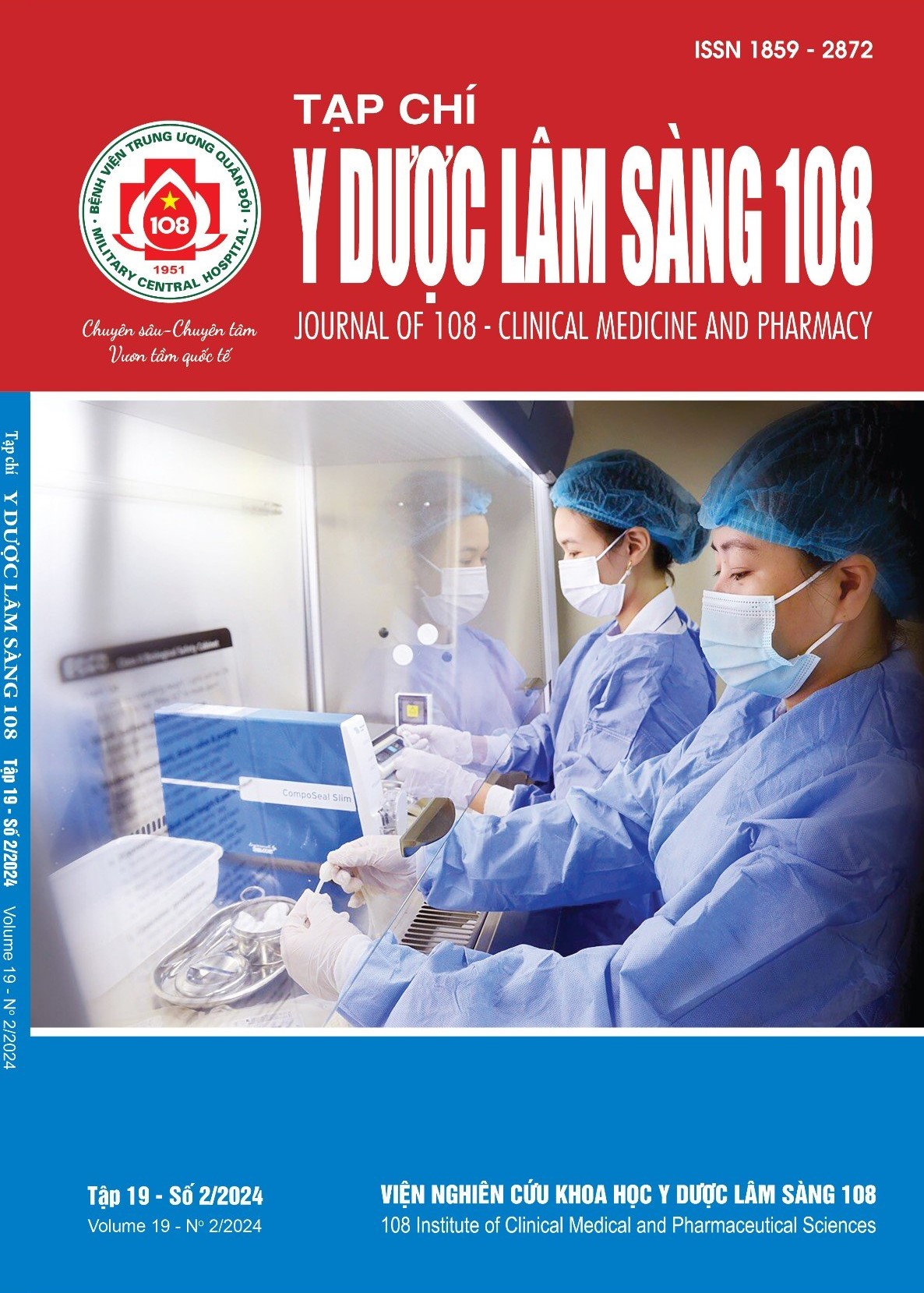Complications of heparin use according to the UMC health system protocol in extracorporeal membrane oxygennation technique
Main Article Content
Keywords
Abstract
Objective: To assess complications associated with the use of heparin according to the anticoagulation protocol of the UMC Health System in extracorporeal membrane oxygenation (ECMO) technique. Subject and method: 80 ECMO patients anticoagulated with heparin following the UMC protocol. Method: Prospective interventional study. Result: Most patients underwent cannulation via surgical methods (73.7%), and the discharge survival rate was 43.8%. The mean activated clotting time (ACT) was 179.3 ± 8.8 seconds with an average heparin dose of 10.8 ± 5.1IU/kg/h. The bleeding complication rate was 55%, primarily mild bleeding (48.7%), most commonly occurring at the ECMO cannulation site (50%). Bleeding events were often observed on the first day of ECMO (61.4%). ACT measurements during bleeding events were mostly above 200 seconds (56.8%), with an average ACT of 201.6 ± 15.0 seconds. Conclusion: The main complication of using heparin according to the UMC protocol is bleeding, primarily mild bleeding at the ECMO cannulation site, occurring on the first day of ECMO and primarily associated with ACT testing exceeding 200s. There was no difference in mortality between the bleeding group and the non-bleeding group
Article Details
References
2. Zeibi Shirejini S, Carberry J, McQuilten ZK et al (2023) Current and future strategies to monitor and manage coagulation in ECMO patients. Thromb J, 21(1): 11.
3. Bembea MM, Annich G, Rycus P et al (2013) Variability in anticoagulation management of patients on extracorporeal membrane oxygenation: An international survey. Pediatr Crit Care Med 14(2): 77-84.
4. Colman E, Yin EB, Laine G et al (2019) Evaluation of a heparin monitoring protocol for extracorporeal membrane oxygenation and review of the literature. J Thorac Dis 11(8): 3325-3335.
5. UMC Health System (2016) Adult ECMO Heparin Infusion Guidelines. https://apps.umchealthsystem.com/forphysicians/medicalorders/Ref%20-%20Adult%20ECMO%20Heparin%20Infusion%20Guidelines.pdf
6. McMichael ABV, Ryerson LM, Ratano D et al (2022) 2021 ELSO Adult and Pediatric Anticoagulation Guidelines. ASAIO J 68(3): 303-310.
7. Laverdure F, Louvain-Quintard V, Kortchinsky T et al (2016) PF4-heparin antibodies during ECMO: incidence, course, and outcomes. Intensive Care Med 42(6): 1082-1083.
8. Mazzeffi MA, Tanaka K, Roberts A et al (2019) Bleeding, thrombosis, and transfusion with two heparin anticoagulation protocols in venoarterial ECMO patients. J Cardiothorac Vasc Anesth 33(5): 1216-1220.
9. Đào Xuân Cơ (2016) Đánh giá biến chứng khi sử dụng heparin trong kỹ thuật tim phổi nhân tạo (ECMO) tại Bệnh viện Bạch Mai. Y học Việt Nam, Tháng 11- số 1, tr. 151-155.
10. Raasveld SJ, Karami M, Schenk J et al (2023) Transfusion of red blood cells in venoarterial extracorporeal membrane oxygenation:
A multicenter retrospective observational cohort study. Transfusion 63(10): 1809-1820.
11. Krueger K, Schmutz A, Zieger B et al (2016) Venovenous extracorporeal membrane oxygenation with prophylactic subcutaneous anticoagulation only: An observational study in more than 60 patients. Artificial Organs,
12. Yeo HJ, Kim do H, Jeon D et al (2015) Low-dose heparin during extracorporeal membrane oxygenation treatment in adults. Intensive Care Med 41(11): 2020-2021.
13. Glick D, Dzierba AL, Abrams D et al (2015) Clinically suspected heparin-induced thrombocytopenia during extracorporeal membrane oxygenation. J Crit Care 30(6): 1190-1194.
 ISSN: 1859 - 2872
ISSN: 1859 - 2872
